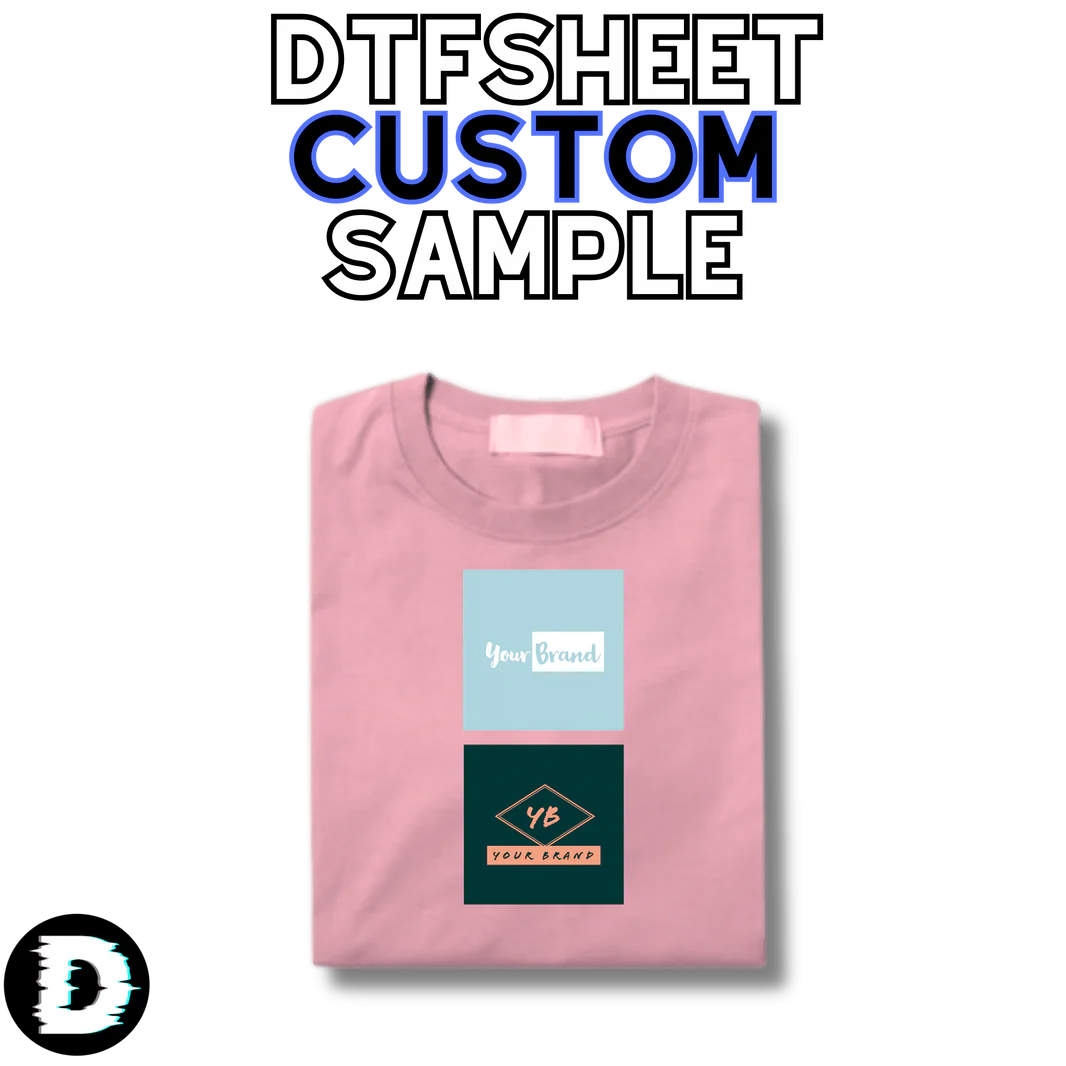
Understanding Heat Transfer Basics
When it comes to customizing clothing with your own unique designs, heat transfers are the go-to method.
Whether you're a budding fashion designer or just want to add a personal touch to your favorite garments, heat transfers offer an easy and effective solution.
In this section, we'll dive into the basics of heat transfers and unravel the magic behind this popular customization technique.
How Does Heat Transfer Work?
Heat transfer is a process where a design or image is printed onto a special transfer paper using heat-sensitive inks.
The printed transfer is then placed onto the fabric and subjected to heat and pressure, which allows the ink to transfer from the paper to the garment.
It's like a temporary tattoo, but for your clothes!
Different Types of Heat Transfers
There are various types of heat transfers available, each with its unique qualities and applications.
The most common types include plastisol transfers, sublimation transfers, and vinyl transfers. Plastisol transfers use a plastic-based ink that melts and bonds to the fabric when heat is applied.
Sublimation transfers utilize a special ink that turns into a gas under heat, transferring the design onto synthetic materials.
Vinyl transfers involve cutting out designs from a vinyl sheet and heat pressing them onto the fabric.
Heat Press Equipment: Your Creative Companion
To achieve professional-looking results with heat transfers, you'll need a heat press machine.
A heat press is essentially a combination of a heating element and a large, flat surface.
It provides even heat distribution and consistent pressure, ensuring that the transfer adheres perfectly to the fabric.
With a heat press, you have precise control over temperature and time, allowing you to customize various types of materials.
Tips for Successful Heat Transfers
To make the most out of your heat transfer projects, here are a few tips to keep in mind:
-
Start with a clean, flat surface: Ensure that your fabric is clean, free from wrinkles, and placed on a flat surface before applying the heat transfer. This will help you achieve a smooth and even application.
-
Test, test, test: Before applying the heat transfer to your final garment, it's always a good idea to do a test run on a scrap piece of fabric.This will give you a chance to adjust temperature, pressure, and timing to achieve the desired results.
-
Peel carefully: Once the heat transfer is applied and cooled down, peel the transfer paper slowly and carefully. This helps to prevent any unwanted distortion or damage to the design.
The Beauty of Heat Transfers
Heat transfers offer endless possibilities for expressing your creativity and personal style.
From customizing t-shirts, hoodies, and hats to adding unique designs to bags and accessories, heat transfers provide a versatile and cost-effective way to make your mark.
So, grab your favorite design, fire up that heat press, and let the magic of heat transfer bring your imagination to life!
Remember, heat transfer is just one of the exciting customization methods available. In the next sections, we'll explore more techniques and delve into the world of custom design printing.
Choosing the Right Transfer Type
When it comes to heat transfers, choosing the right transfer type is essential for achieving the desired results.
Different transfer types offer unique characteristics, so let's explore your options and help you make an informed decision.
Plastisol Transfers: Your Reliable Classic
- If you're looking for a tried-and-true transfer type, plastisol transfers are a fantastic choice. These transfers use a plastic-based ink that provides vibrant and durable results. They work well on various fabric types, from cotton to polyester blends. Plastisol transfers are known for their excellent opacity, making them ideal for light and dark-colored fabrics alike. With their crisp and vivid prints, they're a go-to option for many heat transfer enthusiasts.
- Sublimation Transfers: Unleash Your Creative Spirit
If you're working with synthetic materials or looking to achieve a photo-realistic look, sublimation transfers are your ticket to creativity. These transfers utilize a special ink that turns into a gas under heat and infuses into the fabric's fibers. The result? Vibrant, permanent prints that won't crack or fade over time. Sublimation transfers work best on polyester fabrics, allowing you to achieve stunning, full-color designs with intricate details. So, if you're eager to create eye-catching sports jerseys or personalized activewear, sublimation is the way to go!
- Vinyl Transfers: Flexibility and Versatility Combined
When it comes to customization projects that require precision and intricate designs, vinyl transfers shine. Vinyl transfers involve cutting out designs from a sheet of vinyl using a plotter or a digital cutter. The cut-out design is then heat pressed onto the fabric. With vinyl transfers, you have a wide range of color options, including metallic and glitter finishes. They work well on both light and dark fabrics, providing a smooth, thin, and flexible result. So, if you're planning to create customized apparel with intricate details or add a touch of sparkle, vinyl transfers are your go-to choice.
Considerations for Choosing the Right Transfer Type
When deciding on the perfect transfer type for your project, there are a few factors to keep in mind:
-
Fabric Compatibility: Consider the type of fabric you'll be working with. Some transfers work best on cotton, while others excel on synthetic materials like polyester.
-
Design Complexity: If your design involves intricate details, gradients, or photographic elements, sublimation or vinyl transfers may be the best options to ensure accurate reproduction.
-
Color Options: Different transfer types offer varying color options. Consider the color palette you want to work with and choose a transfer type that can bring your vision to life.
-
Durability: Think about the longevity you desire for your custom designs. Plastisol and sublimation transfers are known for their durability, while vinyl transfers offer flexibility and stretchability.
By considering these factors and understanding the strengths of each transfer type, you can confidently choose the one that aligns best with your project's requirements.
Heat Press Safety Tips
When it comes to using a heat press for your heat transfer projects, safety should always be a top priority. Follow these simple tips to ensure a safe and enjoyable experience.
- Protect Your Hands and Fingers
Heat presses can reach high temperatures, so it's crucial to protect your hands and fingers from burns. Always use heat-resistant gloves when handling hot surfaces or transferring garments. Additionally, be mindful of your hand placement to avoid accidental contact with the heated platen.
- Mind Your Workspace
Create a safe and organized workspace for your heat press endeavors. Clear away any clutter or flammable materials that may pose a risk. Ensure that the area surrounding the heat press is well-ventilated and free from any potential hazards. This way, you can work comfortably and confidently.
- Keep a Watchful Eye
While the heat press is in operation, it's important to stay attentive. Never leave the machine unattended, especially when it's heated and in use. Accidents can happen quickly, so maintain a watchful eye to prevent any mishaps or overheating.
- Familiarize Yourself with Your Equipment
Before using a heat press, take the time to read the manufacturer's instructions and familiarize yourself with the specific features and functions of your machine. Understanding how to properly operate and maintain your heat press will help ensure optimal performance and safety.
- Mind the Temperature and Pressure
Proper temperature and pressure settings are crucial for successful heat transfers. Follow the recommended settings provided by your transfer paper or vinyl supplier. Avoid using excessive heat or pressure, as it can damage the fabric or cause burns. Always test a small area before applying the heat transfer to the entire garment.
- Take Breaks and Stay Hydrated
Heat press projects can sometimes be time-consuming. Remember to take regular breaks and stay hydrated throughout the process. Prolonged exposure to heat can be tiring, so it's important to listen to your body and give yourself moments to rest and recharge.
- Clean and Maintain Regularly
Keeping your heat press clean and well-maintained is not only essential for its longevity but also for safety. Follow the manufacturer's guidelines for cleaning and maintenance, and regularly inspect the machine for any signs of wear or damage. A well-maintained heat press ensures optimal performance and minimizes the risk of accidents.
By following these heat press safety tips, you can enjoy your heat transfer projects with peace of mind. Remember, safety always comes first, so take the necessary precautions and let your creativity soar!
Starting Your Own Heat Transfer Business
If you're passionate about heat transfer and want to turn your hobby into a thriving business, you're in for an exciting journey. Here are some tips to help you get started on the path to entrepreneurial success.
- Define Your Niche
To stand out in the competitive heat transfer industry, it's essential to define your niche. Consider specializing in a particular market segment or offering unique customization options. Whether it's personalized apparel for sports teams, custom merchandise for small businesses, or one-of-a-kind designs for special occasions, finding your niche will set you apart and attract the right customers.
- Invest in Quality Equipment
Investing in quality heat press equipment is key to producing professional results. Research different brands and models to find one that suits your specific needs and budget. Look for features such as adjustable temperature and pressure settings, consistent heat distribution, and durable construction. Remember, your heat press is the backbone of your business, so choose wisely.
- Source High-Quality Materials
The quality of your heat transfers greatly depends on the materials you use. Research and source high-quality transfer papers, vinyl, inks, and other supplies. Ensure they are compatible with the heat press and provide vibrant, long-lasting results. Building a reputation for using premium materials will help you gain customer trust and loyalty.
- Perfect Your Craft
Before launching your heat transfer business, take the time to perfect your craft. Experiment with different designs, transfer techniques, and materials. Practice on various fabrics to understand how different heat settings and pressures affect the outcome. The more you refine your skills and expand your knowledge, the better your end products will be.
- Create a Strong Brand Identity
Building a strong brand identity is essential for attracting customers and differentiating yourself in the market. Develop a unique logo, choose a cohesive color palette, and create a compelling brand story. Craft a memorable brand name that reflects your business values and offerings. Consistently apply your brand identity across your website, social media, packaging, and marketing materials.
- Establish an Online Presence
In today's digital age, having a strong online presence is crucial for reaching a wider audience. Create a professional website that showcases your products, services, and pricing. Utilize social media platforms like Instagram, Facebook, and Pinterest to showcase your portfolio and engage with potential customers. Regularly update your online platforms with new designs, promotions, and behind-the-scenes glimpses to keep your audience engaged.
- Provide Exceptional Customer Service
One of the keys to success in any business is providing exceptional customer service. Promptly respond to inquiries, be friendly and approachable, and go the extra mile to exceed customer expectations. Word-of-mouth recommendations and positive reviews can significantly boost your reputation and help you build a loyal customer base.
Remember, starting your own heat transfer business takes time, effort, and dedication. Stay committed, continuously improve your skills, and adapt to market trends. With passion and perseverance, you can turn your love for heat transfer into a successful and fulfilling entrepreneurial venture.



























